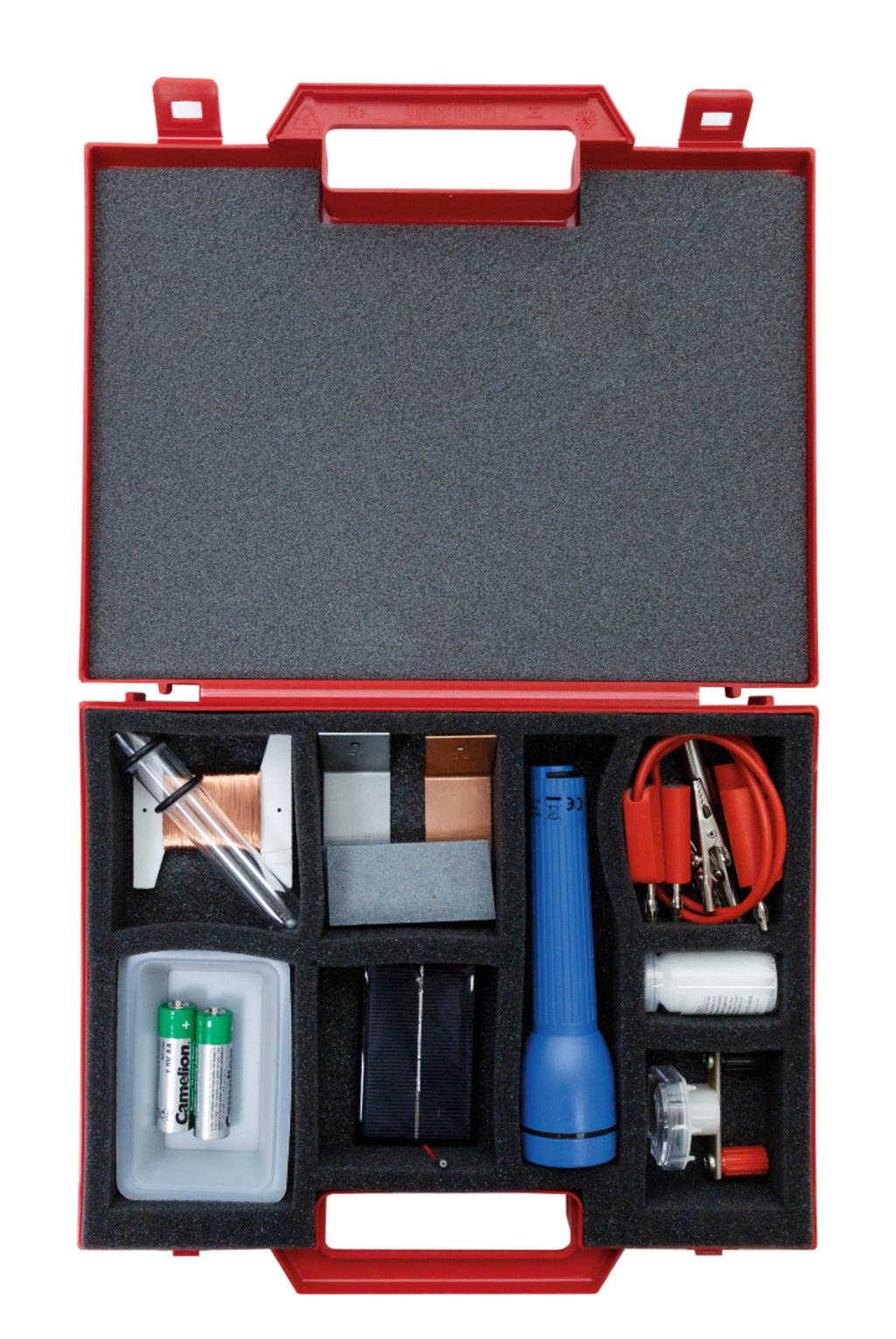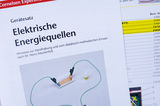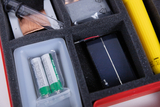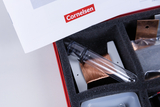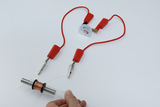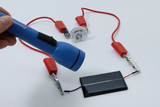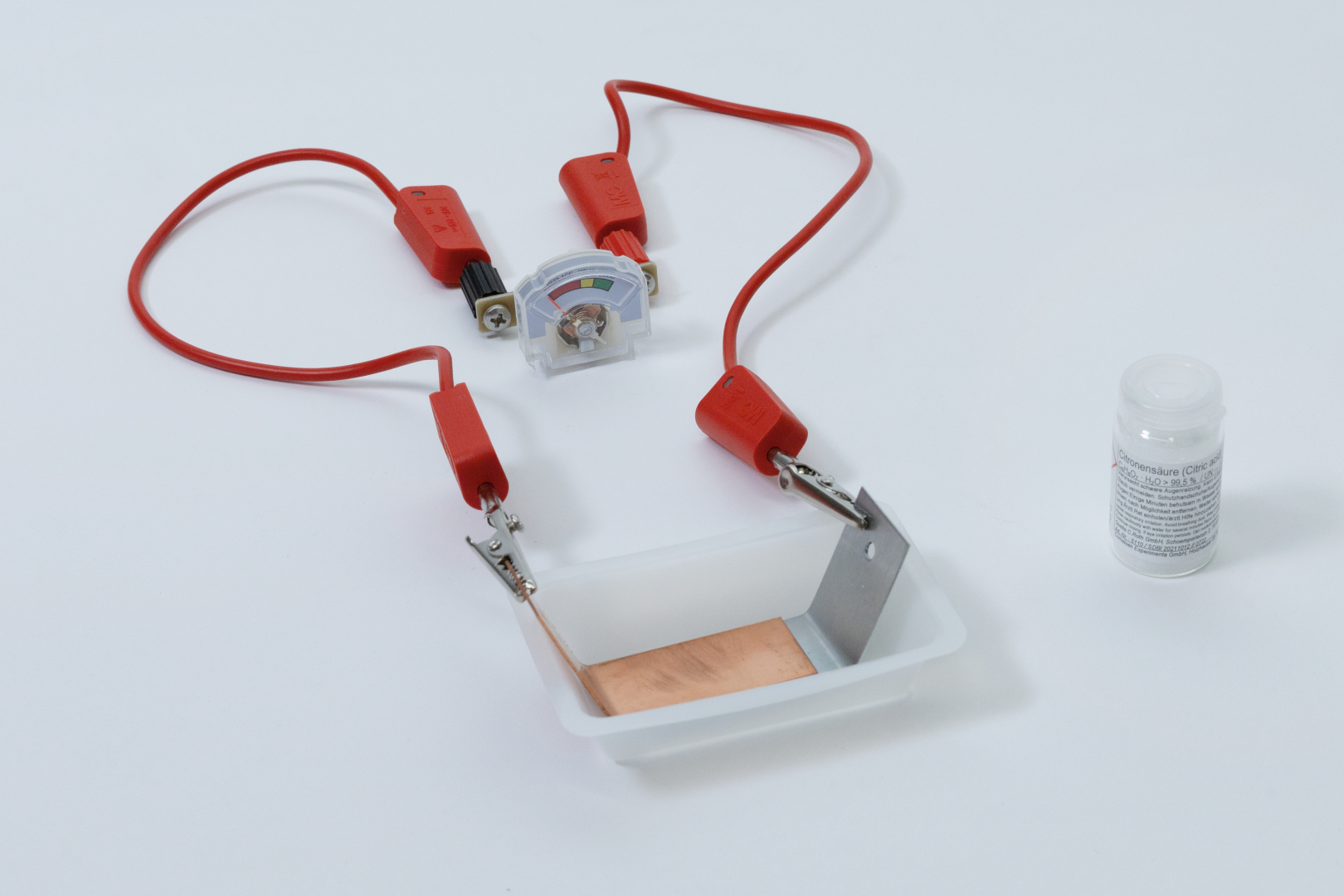Students kit Electrical energy sources
For school experiments involving sources of electrical energy, which can be carried out within the time frame of a single lesson.
The equipment is designed to be particularly simple and easy to understand and can be handled with ease by groups of pupils in the first year of secondary school.
As an indication of the electrical energy generated a voltage indicator is provided.
The principles of electrical generation from the following sources can be illustrated:
- Radiant energy – solar cell
- Chemical energy – galvanic cell
- Mechanical energy – induction coil
The students observe the relationship between energy supply and current. The experiment makes it clear that the solar cell only converts energy, but does not store it.
The students can be informed that all batteries and accumulators employ similar chemical processes to generate electrical energy for circuits. A battery is said to be “dead” when the chemical reactions in it have ceased, e.g. because the substances arising from these reactions have fully sealed the plate surfaces.
Students should recognize that the nature of this energy conversion is different in principle from the other two types of conversion.
- 1 × Plastic dish 95x62x20 mm
- 1 × Copper wire varnished, 0,25 mm Ø (60 m)
- 1 × Torch for 2 x R6
- 1 × Solar cell
- 1 × Copper electrode, angled
- 1 × Zinc electrode, angled
- 1 × Felt board strips, 10 pcs
- 1 × Plastic tube with 2 rings
- 1 × Magnet rod Alcomax 75x10
- 1 × °Glass with citric acid
- 1 × Carton for plastic box R3270x230x55 mm (int.dim.)
- 1 × Plastic box R3 260x197x55 mm
- 1 × Foam insert R3 260x200x35 mm
- 1 × Lidfoam R3, grey 260x200x10 mm
- 2 × Plug lead, 25 cm, red
- 2 × Crocodile clip, bare
- 1 ×
